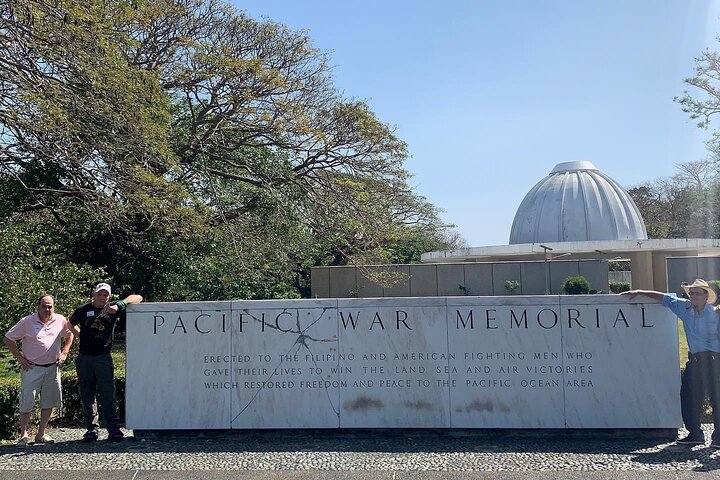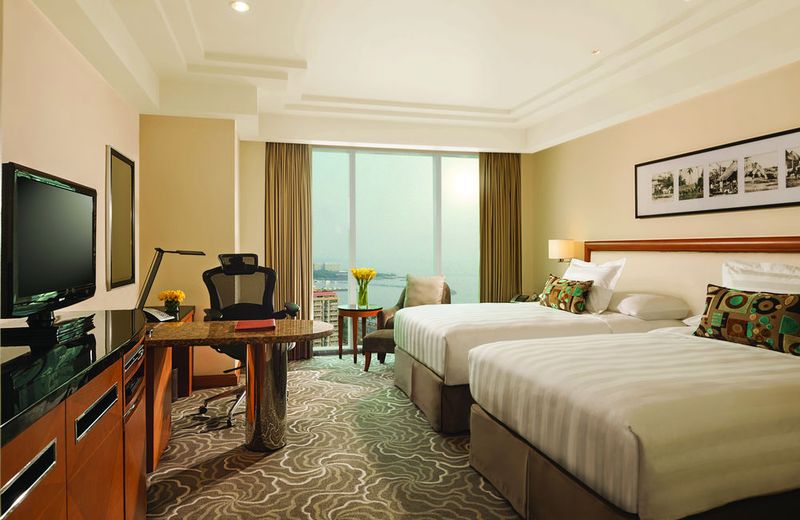Why choose this Manila tour ?
Corregidor Island and the Bataan Death March Memorial Sites are must-see destinations due to their profound historical significance and the powerful stories they tell about World War II in the Philippines.
Historical Significance:
World War II History: Corregidor Island played a crucial role during World War II as a strategic military base in Manila Bay. It was the site of intense battles between American and Filipino forces and Japanese troops.
The island is home to well-preserved military fortifications, including bunkers, gun batteries, and ruins that offer insight into the island’s wartime history.
Malinta Tunnel: A major attraction, this tunnel served as a bomb-proof command center during the war. It includes a fascinating light and sound show that recounts the island’s wartime experiences.
The memorial sites commemorate the harrowing Bataan Death March of 1942, where thousands of Filipino and American prisoners of war were forcibly marched by the Japanese military.
Make the most of your Manila adventure
What makes Full-Day Tour in Corregidor and Bataan War Memorial from Manila a unique experience ?
Bataan is a province on the Philippine island of Luzon Region III. Its capital is Balanga. Shipwrecks and coral reefs dot the waters of Subic Bay, off its northwest coast. Farther south, marine turtles are hatched at the Pawikan Conservation Center. A towering memorial cross and a shrine commemorating WWII’s Battle of Bataan crown Mount Samat in central Bataan. On the east coast, birdlife thrives in the Balanga City Wetland and Nature Park.
A 3 hour travel time from Manila is a worthy visit to this town which has full of history.
A guided historical tram tour on the small island of Corregidor. Visiting war memorial sites, learning its rich history, and paying tribute to the heroes.
Standing solemnly on Corregidor’s peak is the white-marbled saucer-shaped Pacific War Memorial.
Built in 1968 by the US Government for 1.23 million dollars (other sources reported it to be at 3 million dollars), it was dedicated to the Filipino and American forces that fought in the Pacific during the Second World War.
A sculpture depicting a wounded Filipino fighter being aided by an American soldier is installed at the memorial’s entrance, symbolizing the friendship between the two nations.
This massive edifice was built in 1915 to house the 60th Coast Artillery anti-aircraft regiment, the US Regular Army, the 91st Coast Artillery and the Philippine Scouts. Composed of two three-story buildings, its design was based on our country’s tropical climate; high ceiling, large openings and perimeter galleries for ventilation. The windows were interestingly made of capiz (mother of pearl) sliding panels like those found on Spanish Colonial era houses in the country.
All that can be seen now are the slowly deteriorating skeletons of the barracks after it was bombed by the invading Japanese forces in December 1941.
Battery Way is armed with four 12-inch mortar carriages capable of firing highly explosive shells as far as 8.3 miles or 13.35 km in any direction. Each mortar required a crew of at least 14 men to load and fire the shells. The mortars could be lifted to a trajectory between 45 to 70 degrees, which made them ideal for targeting enemies entrenched in higher ground in Bataan. The battery was named after Second Lt. Henry Way of the 4th U.S. Artillery, who died in service in the Philippines in 1900.
The Malinta Tunnel is a tunnel complex built by the United States, from 1922 to 1932. It was initially used as a bomb-proof storage and personnel bunker, but was later equipped as a 1,000-bed hospital.
During the Battle of Corregidor 5 and 6 May 1942), the tunnel served as the headquarters of General Douglas MacArthur. Malinta Tunnel also served as the seat of government of the Commonwealth of the Philippines.
During the re-taking of the island by U.S. forces in 1945, Japanese soldiers who were inside the tunnels committed suicide by detonating explosives within the tunnel complex on 23 February 1945.Their bodies have never been excavated.
Nowadays, the tunnel complex is a museum.
The memorial shrine complex was built to honor and remember the gallantry of Filipino and American soldiers who fought against the Imperial Japanese Army during World War II. The Memorial Cross is a towering structure at the highest point of Mount Samat, 555 m (1,821 ft) above sea level.
The museum was built as a tribute to our fallen heroes who made the ultimate sacrifice in 1942. It showcases tragic moments of the war, especially the horrendous Bataan Death March where thousands of Filipino and American soldiers died.
Tour Description & Additional Info:
- Not recommended for travelers with spinal injuries
- Not recommended for pregnant travelers
- Suitable for all physical fitness levels
- Travel time from Manila to Bataan is 3 hours via Van
- Boat travel time from Mariveles Bataan to Corregidor Island is at 20 minutes
- This is a NON REFUNDABLE BOOKING POLICY
- Pack lunch menu to choose: Pork Adobo, Chicken Afritad, Fried Chicken, mixed vegetables salad, BLT sandwich, Club House sandwich, & chicken sandwich
- pick up time is at 4am or 5am depends on the time availability of the tour in the island
Options To Choose for Your Trip:
- Full-Day Tour in Corregidor and Bataan War Memorial from Manila
Add
Pickup included
- Professional guide
Trending Manila Nearby Tours Likely To Sell Out
Special Instructions:
- This Tour is Provided by Leisure Pro Journeys.
- Tour Timezone & Starts at Asia/Manila.
- Mobile or paper ticket accepted.
- All sales are final. No refund is available for cancellations.
- This Tour is Rated 5 Stars based on 3 valid reviews on VIATOR.
- Minimum 1 Travelers is required to book.
- Maximum 15 Travelers is accepted for booking.









